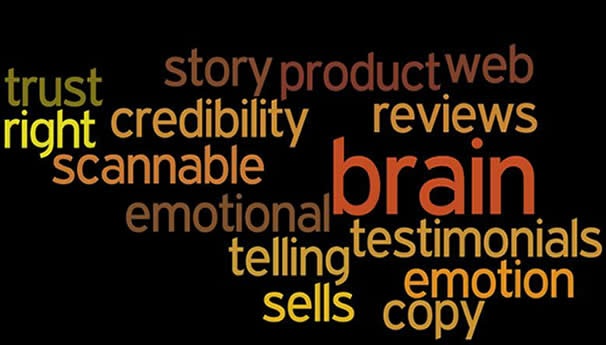Before we go over the steps to creating effective online copy that sells, it’s important to understand a couple of key insights into how users tend to interact with web copy. According to usability and web design expert Jack Nielsen, people don’t read online, they scan. Because of this, successful web copy must be scannable web copy (bullet lists, highlighted keywords etc.). Another important factor to keep in mind is that emotion sells. Emotion is the primary motivating factor encouraging people to buy and is far more powerful than rational reasons alone.
Step 1: Add Emotion
This can be done by playing off powerful emotions such as anger, fear, and exclusivity to name a few. Good story telling with a personal, conversational tone can also add to the emotion of your pitch. Invoking the emotions of your target audience is a great way to connect them with your offering, especially if you’re helping them to achieve a goal or to fill a desire.
Step 2: Scannable Copy Reinforcing Your Offer
This can be done through the use of powerful bullet points showcasing the benefits of your offer, calling attention to bonuses (such as a free gift) when a purchase is made, or some type of guarantee to help ease any consumer concerns. Writing meaningful subheads that get straight to the point and only presenting one idea per paragraph are other productive ways to get the most important information to people with a limited amount of copy.
Step 3: Use of Testimonials and Additional Credibility Elements
We’ve spoken quite a bit in previous blogs on the importance of testimonials in terms of building consumer confidence and the value they create when placed next to conversion points on web pages. People love to hear about products and services from previous users and the popularity of social review sites such as Yelp drive this point home. Security certificates, case studies, and statistics also go a long way in this category.
Step 4: Using Emotional Words Instead of Rational Ones
Since the motivation leading a person to make a purchase is an emotional one, it makes sense to use emotional terms to conjure up these feelings. This is reasonably self explanatory, so I’m providing a cool site I found, which has compiled a list of some solid action words, as well as examples of left-brain (rational) words and the right-brain (emotional) words to replace them with.


Look via our ecig testimonials as well as make thee change today, you’ll
enjoy us for it in a feew months time!
Leveraging today’s latest modern technology, Boise
ddntist Dr. Fred Stillings caan produce outcomes that change how you
look and feel.